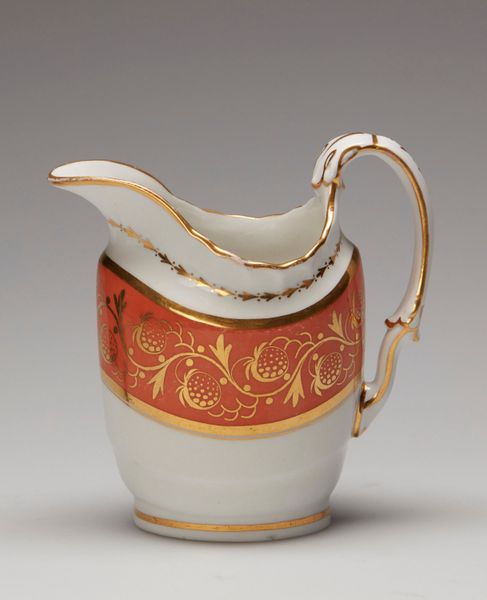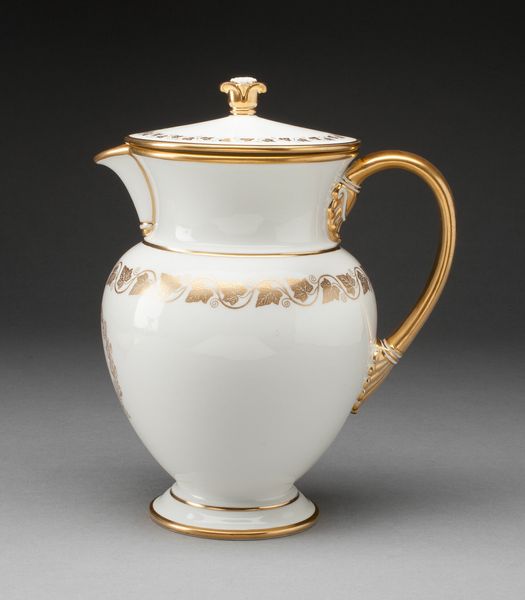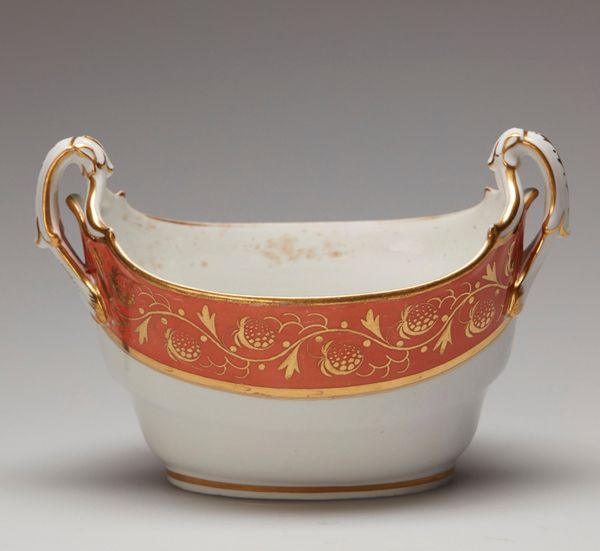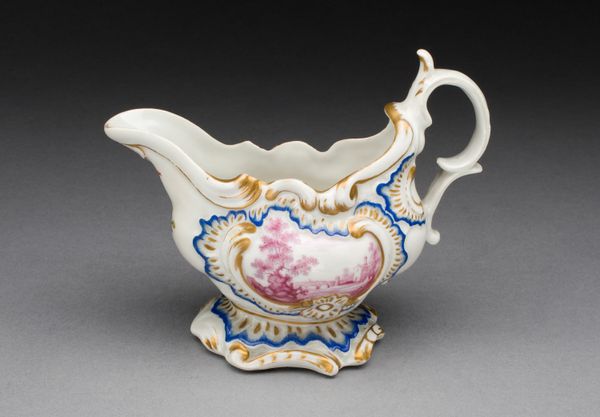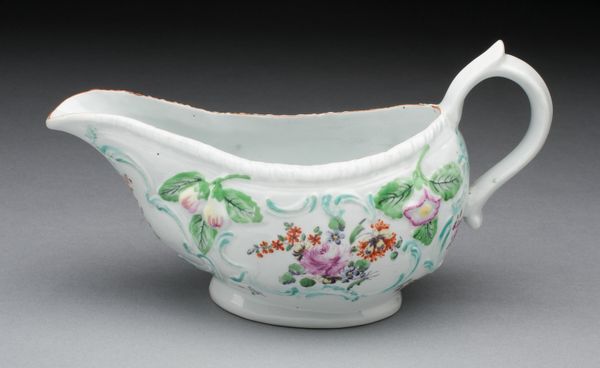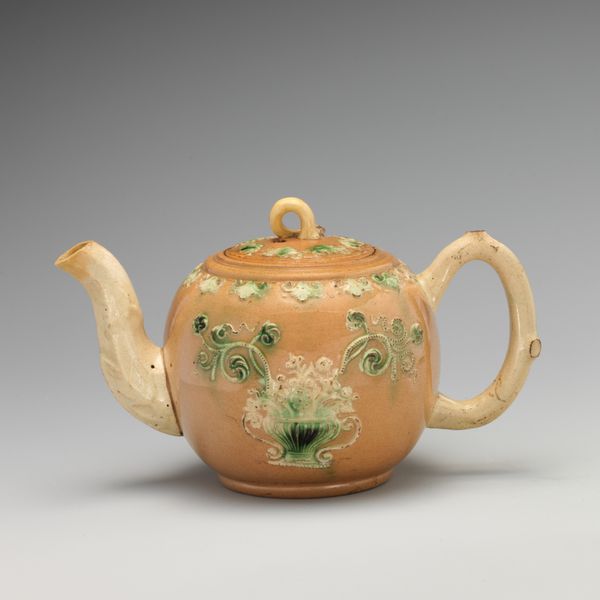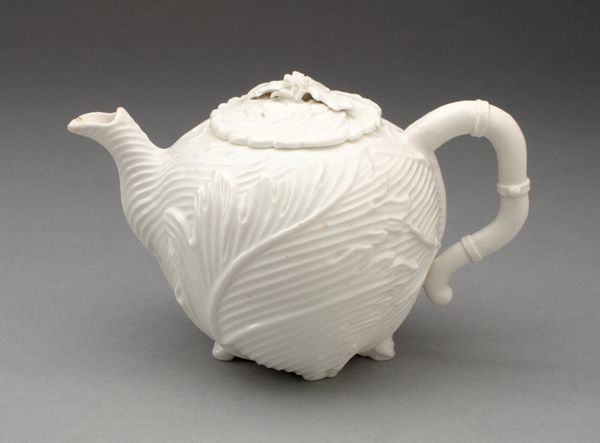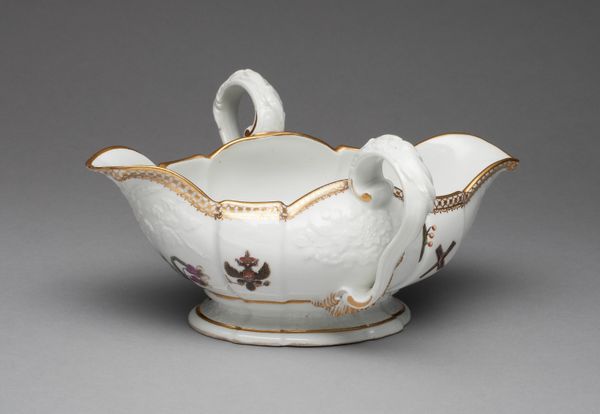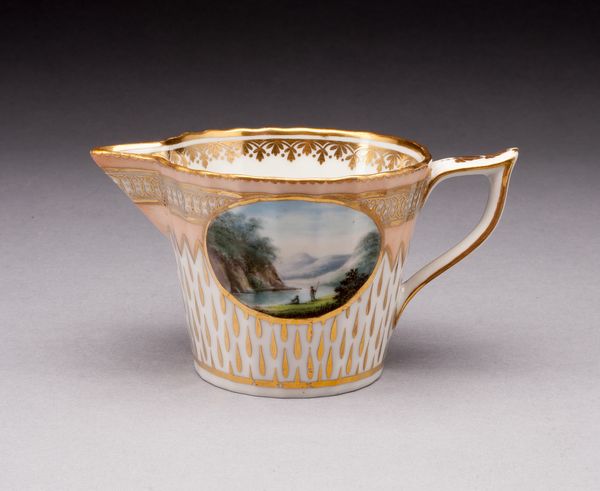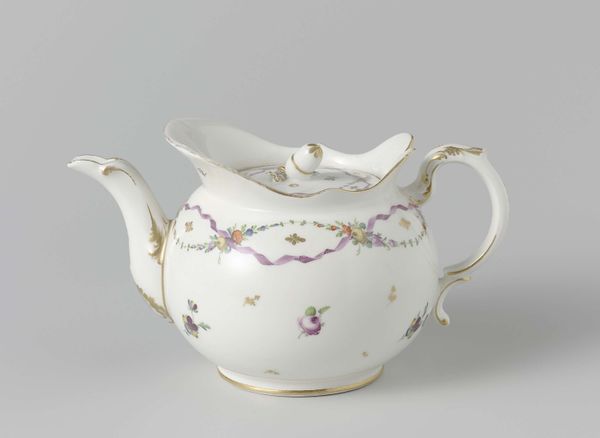
ceramic, porcelain
#
neoclacissism
#
ceramic
#
porcelain
Dimensions: 9.2 × 16 × 9.4 cm (3 9/16 × 6 5/16 × 3 11/16 in.)
Copyright: Public Domain
Curator: Standing before us is a “Creamer,” crafted around 1820 by the Wedgwood Manufactory. A seemingly simple vessel made of ceramic, now held at The Art Institute of Chicago. Editor: Immediately, the delicacy of it strikes me. That crisp white against the shimmer of gold makes me feel like I’ve stumbled upon a secret from a Jane Austen novel. Curator: It absolutely has that period charm! What’s interesting here is the marriage of function and aspiration. These refined ceramics weren’t merely functional, but emblems of status, reflections of wealth in a society undergoing seismic industrial changes. Editor: You see, that’s where the material reality gets compelling. The precision required in production, the controlled firing in the kiln, and the global supply lines for the raw materials—clay from specific quarries, gold from distant mines. There is labor in every element! And that faux-bois detailing of the handle suggests an embrace of industrial mimcry. Curator: Ah, that little flourish of "nature"! I love that contrast. Even the embossed leaf patterns across the body feels delicate—almost as if a garden’s secrets are captured. A subtle kind of trompe l’oeil? Editor: Very subtly—but it makes me consider, for whom was it meant? Wealthy patrons seeking refinement, aspiring merchants eager to showcase status… These objects become charged with social meaning when handled and used. That gilded rim… that's the part touching skin. Curator: A tactile luxury! It's incredible how a seemingly humble item becomes a reflection of cultural currents. It truly demonstrates how, by understanding their role and cultural relevance, we understand ourselves. Editor: And considering these are mass produced, to a certain extent… It prompts a re-evaluation of the very essence of artistic merit—is it truly possible to divorce the aesthetic from labor itself? Curator: It's a question without an easy answer, really, which is one of the things that makes engaging with artworks like these rewarding. We carry on those very dialogues. Editor: A beautiful and humbling little "Creamer," really, isn't it? Both a functional tool and a powerful window into history, consumption, and social relations.
Comments
No comments
Be the first to comment and join the conversation on the ultimate creative platform.
